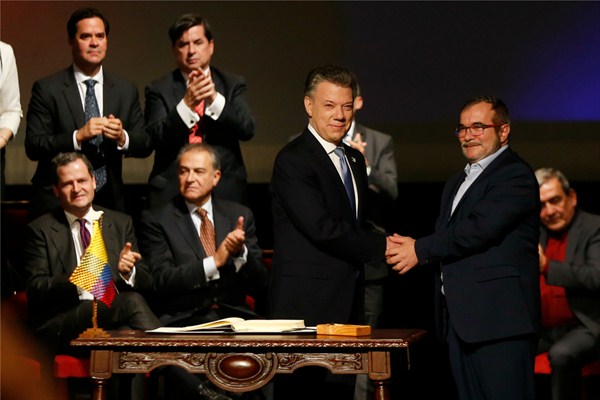Leaders of Colombia’s Revolutionary Armed Forces of Colombia, or FARC, wearing sport jackets and khakis against the high-altitude chill, attended meetings in Bogota last week, a city they hadn’t seen in decades, if ever. In Colombia, unlike anywhere else in the world in 2016, a once-intractable conflict has ended.
The peace accord between the government and the FARC guerrillas, which puts an end to 52 years of fighting, cleared one of its last formal hurdles on Dec. 13. Colombia’s Constitutional Court ruled that laws needed to implement the accord’s commitments could be passed in a matter of weeks using a special “fast-track” procedure, rather than the usual multiple-debate process that can take more than six months. That sort of delay was untenable, as it would have required thousands of guerrillas to fester in their jungle camps until mid-2017 awaiting passage of a law to prevent them from being summarily arrested for having rebelled. Guerrilla command and control, and a fragile cease-fire, would probably have broken down.
The fast-track decision is the latest curve in a rollercoaster ride that began on Aug. 24, when the government and FARC announced an accord after four years of talks in Havana, Cuba, and extended through the fall, when Colombian voters rejected a referendum on the deal—to the shock of everyone, even the accord’s opponents. Among several objections was a sense that penalties for combatants guilty of war crimes were not severe enough.

